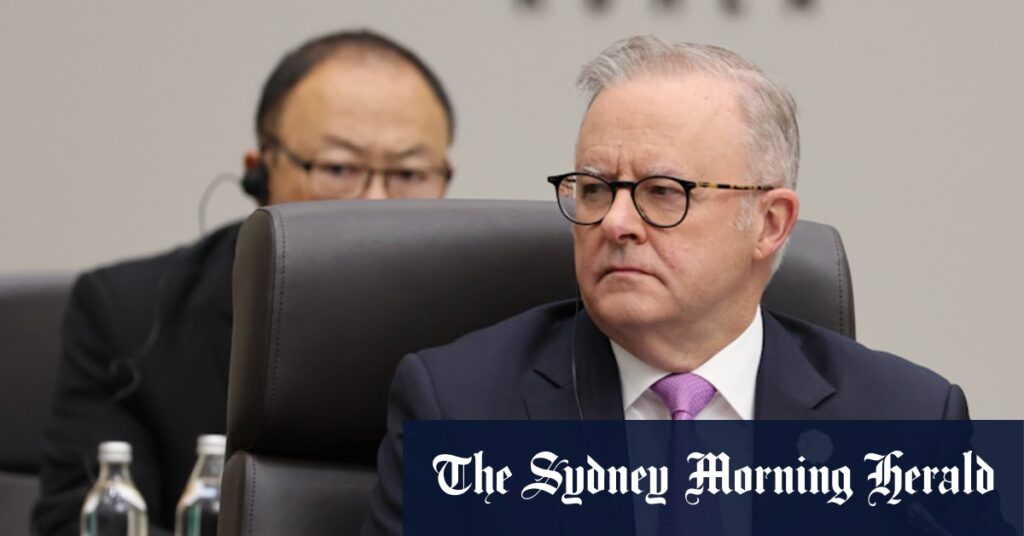
Gyeongju, South Korea: Prime Minister Anthony Albanese has joined Asia-Pacific leaders in a collective call for a stable and resilient trading system, urging the United States and China to seek a long-term ceasefire in their ongoing trade war. This conflict has significantly impacted the region’s economies, creating ripples across global markets.
The conclusion of this year’s Asia-Pacific Economic Co-operation (APEC) summit marked a departure from previous declarations, as the 21 member nations chose not to reiterate their support for a “rules-based multilateral trading system” centered around the World Trade Organisation. This phrase had been a staple in APEC’s joint declarations for the past four years.
Shift in Global Trade Dynamics
The omission of the WTO endorsement comes in the wake of former US President Donald Trump’s aggressive trade policies, which saw tariffs imposed on numerous countries as a bargaining tool to secure favorable bilateral deals for the United States. This move has disrupted traditional trade norms and introduced new uncertainties into the global market.
Instead, APEC leaders highlighted the Asia-Pacific region’s position at a “pivotal juncture,” calling for efforts to “ensure resilient supply chains.” This statement indirectly references the Trump administration’s tariff policies and China’s threats to restrict access to rare earth minerals, crucial for high-tech industries.
Albanese’s Call for Cooperation
Reflecting on the tensions between the US and China, Albanese emphasized the importance of cooperation between the two superpowers. “It is in the world’s interest for the world’s two largest economies and powers to engage with each other constructively,” he stated before returning to Canberra from South Korea.
China is set to host next year’s APEC summit in Shenzhen, a decision supported by Albanese despite the recent lifting of COVID-era economic sanctions on Australian industries by Beijing. “They’re a major economy. They’re Australia’s major trading partner. Australia supported China hosting APEC,” he affirmed.
Summit Highlights and Side Meetings
This year’s APEC summit was overshadowed by a significant meeting between Trump and Chinese President Xi Jinping, where they agreed to pause their damaging trade feud. This conflict has highlighted vulnerabilities in key supply chains, with Beijing threatening to leverage its dominance in rare earths mining and processing as a countermeasure to US tariffs.
Canadian leader Mark Carney provided a stark assessment of the current trade landscape, declaring to APEC business leaders that the era of expanding “rules-based, liberalised trade and investment … is gone.” Facing potential new tariffs from the US, Carney invited other nations to strengthen trade relations, outlining Canada’s ambition to “double our non-US exports over the course of the next decade.”
China’s Strategic Positioning
With Trump absent from the two-day summit, Xi Jinping seized the opportunity to position China as a defender of free trade norms and a stable, reliable alternative to the United States. This strategic move underscores the shifting dynamics in global trade leadership.
Implications and Future Outlook
The APEC summit’s outcomes reflect a broader shift in global trade dynamics, with traditional alliances and systems being reevaluated. The call for a US-China trade ceasefire underscores the importance of stability in international markets, particularly as supply chain disruptions continue to pose significant challenges.
As the world anticipates next year’s summit in Shenzhen, the focus will likely remain on fostering cooperation and addressing the economic tensions between the US and China. The outcomes of these discussions will have far-reaching implications for global trade and economic stability.
In the meantime, countries like Canada are actively seeking to diversify their trade partnerships, reducing reliance on traditional economic powerhouses and exploring new opportunities in a rapidly changing global landscape.






